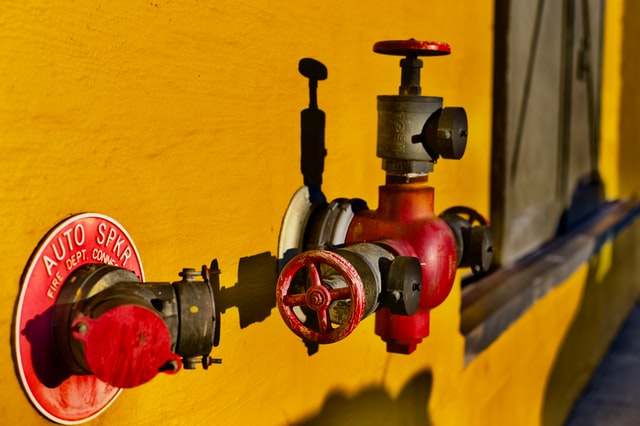
What Is Fire Sprinkler For?
If you are interested in learning more about fire sprinklers, you’ve come to the right place. There are many types of sprinklers, including home, commercial, high rise, multi-use, and multi-family. This article will review these different types and provide the information you need to choose the right one for your building. Listed below are some typical applications for fire sprinkler inspection and testing NYC. If you have any questions, contact us today!
Home
HFSC is a nonprofit organization in the United States and Canada that aims to promote home fire sprinkler systems. The organization’s mission statement and board of directors can be read on its website. In addition, the United States Fire Administration has partnered with HFSC for many years. The coalition has several resources on its website, including a handy calculator calculating the cost of installing a sprinkler system.
The National Fire Protection Association, the Wisconsin State Fire Marshal’s office, and several other organizations have recognized the coalition’s efforts to promote home fire sprinklers. In addition to producing educational materials for homeowners, the coalition has created virtual reality (VR) videos using actual footage from real fires. These VR videos provide 360-degree full-room views and can be viewed using 3D glasses or a headset. The site also features an alternative 2D view of the video.
Commercial
The most common type of fire sprinkler system is the wet pipe system. But it’s not sufficient for many situations. In cold climates and non-heated buildings, it’s better to use a dry pipe system. These systems contain much air and gas to keep water from freezing and bursting. This is accomplished through a pump that releases the water into the pipes. A dry pipe system is the best solution when a fire breaks out in an area with low temperatures.
Fire sprinkler requirements vary depending on the size and occupant load of a building. Most assembly buildings require a fire sprinkler system containing 300 or more occupants. Most nightclubs, restaurants, and storage facilities also require a fire sprinkler system. However, the number of occupants is less critical than the floor area. A sprinkler system can significantly reduce the overall cost of the project.
High rise
While sprinklers are a necessary safety feature for high-rise buildings, they must be regularly inspected and maintained. Fire sprinklers can have disastrous consequences for the people inside if they fail to operate correctly. Therefore, regular testing of high-rise sprinklers is necessary for fire safety maintenance. Here are some tips for ensuring that high-rise sprinklers are working at their optimal levels:
The National Fire Protection Agency (NFPA) oversees the building safety rules. Unlike conventional buildings, high-rise buildings can have limited exit routes and no elevators. Fire safety design requires several exit routes and other fire safety equipment. Also, high-rise buildings need to be built to meet certain standards. For example, some buildings require sprinklers in areas like the laundry room and trash compactor. In addition, high-rise buildings must have fire-resistant walls and ceilings that can be evacuated in a fire.
Multi-use
A multi-purpose fire sprinkler system has several advantages over standard fire sprinkler systems. These sprinklers combine multiple functions and a variety of pipe types. These systems reduce the amount of piping needed to protect multiple uses. Furthermore, these sprinklers do not require additional features like backflow protection and flow alarms. Finally, since multi-purpose systems are integrated with a domestic water supply, they do not cause problems when shutting down. As a result, multi-use fire sprinkler systems are often inspected by plumbers.
The main advantage of a multi-use fire sprinkler system is that it integrates with your home plumbing system. The system uses the same cold-water plumbing pipes as your home’s plumbing. This means less piping, less labor, and less mess. Multi-purpose fire sprinkler systems also reduce the fire’s risk of water stagnation, making them particularly effective for new construction projects. The benefits are clear regardless of whether you’re looking for a multi-purpose system for your home or building.
Smoke detector
When evaluating the effectiveness of smoke detectors, the primary consideration should be the amount of safe egress time. The number of casualties in fires that do not have sprinklers is approximately one-five greater than that in fires with smoke detectors. A smoke detector is designed to alert occupants to the danger of fire through sound. This is why automatic sprinklers are often connected to a building’s fire alarm system.
Smoke detectors should be placed in corridors, alternating zones, and other areas with low ceilings. A full building fire alarm requires two smoke detectors. Electric room detectors can be installed in place of a sprinkler system. In addition, door release smoke detectors must be installed in rooms with low ceilings, are held open by a magnet or have other special requirements. To prevent false alarms, install smoke detectors in alternating zones.
Fire suppression system
A fire suppression system is a device used to control and extinguish fires. There are many suppression systems, each used for a different application. These fire-fighting devices are used in many settings, including homes, workplaces, and even vehicles. To learn more about the benefits of these devices, read on to learn more about their use and application. Listed below are some of the most common types of suppression systems and their uses.
A fire suppression system is designed to detect the presence of flames through smoke, heat, and other warning signals. The system is often integrated with an alarm system, triggered when the suppression system detects fire and initiates the primary steps to put out the fire. These systems normally release fire-fighting agents automatically, but some require manual intervention. A fire suppression system, including data centers and server racks, is important for any facility.





